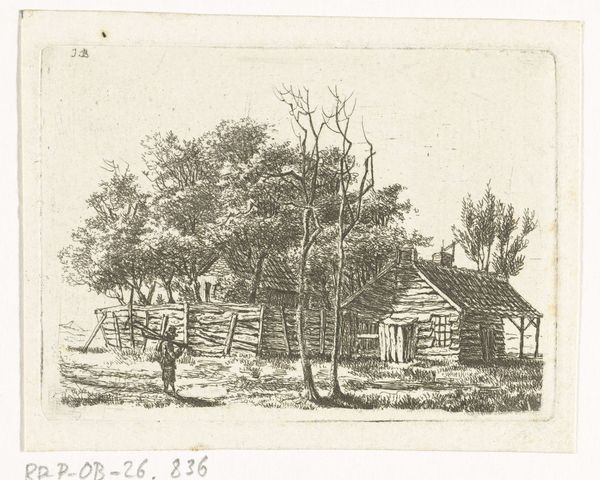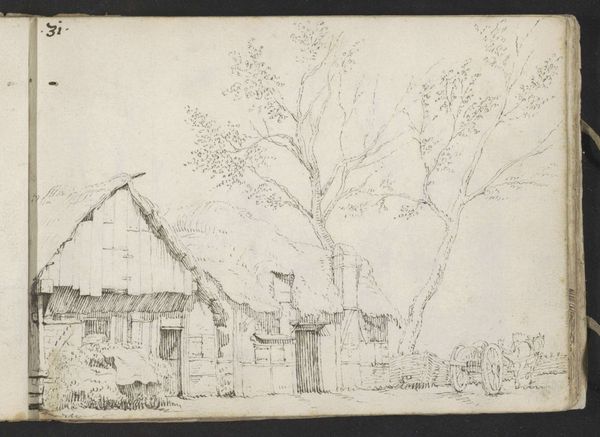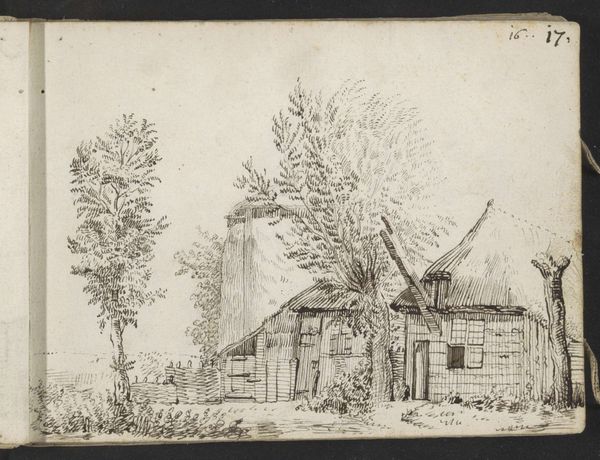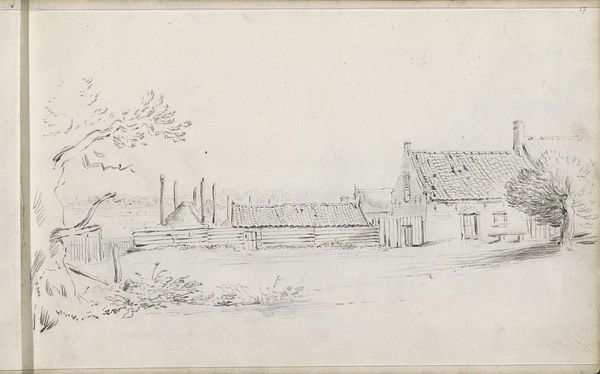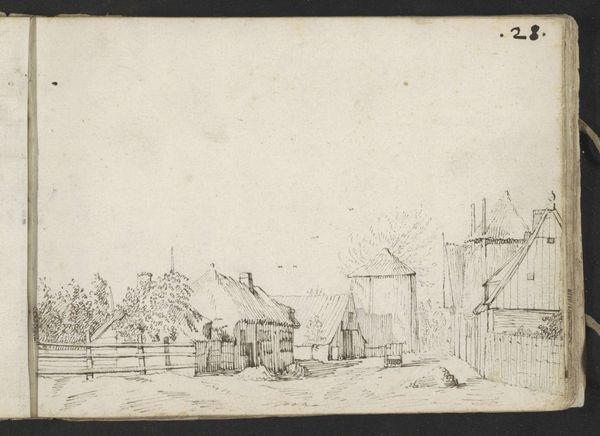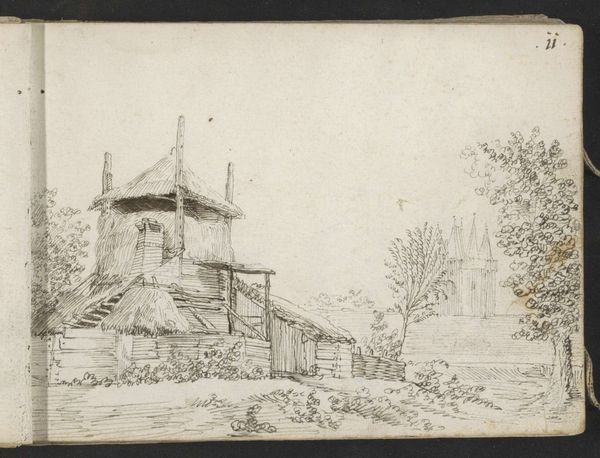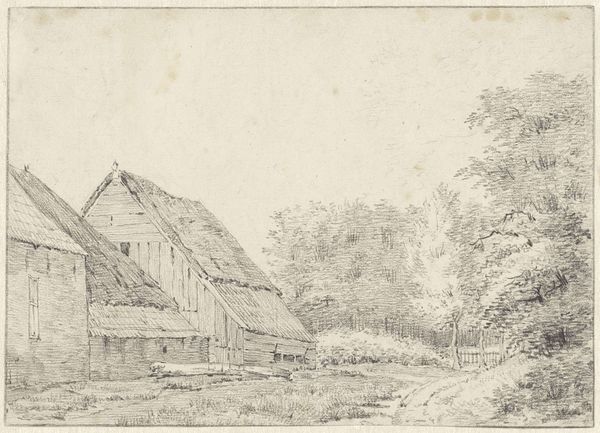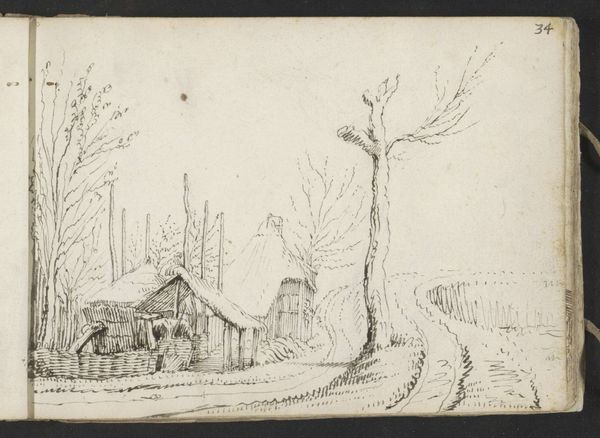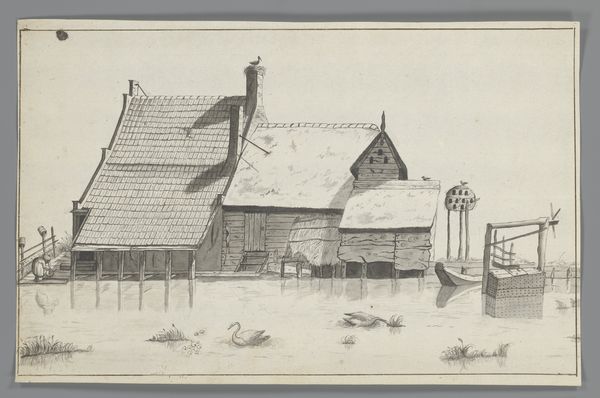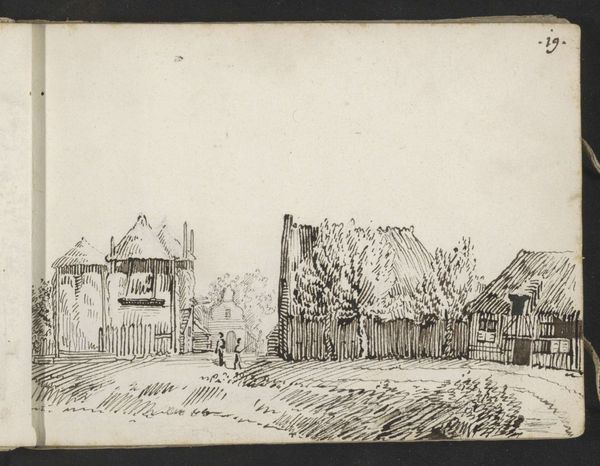
drawing, paper, ink, pen
#
drawing
#
dutch-golden-age
#
mechanical pen drawing
#
pen sketch
#
sketch book
#
landscape
#
paper
#
personal sketchbook
#
ink
#
sketchwork
#
pen-ink sketch
#
pen work
#
sketchbook drawing
#
pen
#
genre-painting
#
storyboard and sketchbook work
#
sketchbook art
#
realism
Copyright: Rijks Museum: Open Domain
Editor: This drawing, "Boerenwoning buiten Zwolle," was created by Gerard ter Borch the Younger around 1631 to 1633. It’s ink on paper, a quick sketch really. I'm struck by the simplicity, almost mundane quality, of the rural scene. What can you tell me about this work? Curator: For me, this image opens up questions about artistic production and the depiction of labor. This isn't some grand history painting; it's a quick sketch, suggesting it may be preparation for something else. But let's consider the materiality of it. It's ink on paper – easily transportable materials. Editor: So, the *means* by which it was made is important? Curator: Absolutely. It speaks to access. Was paper readily available, or a precious commodity? What kind of ink was used, and who made it? The scene itself—a peasant dwelling—makes me wonder what labor the inhabitants performed, how they related to the land, and, importantly, what status Ter Borch gives them by depicting it? Editor: Interesting! It makes you think about the economy of art-making too. Curator: Precisely. Even the "sketchy" quality might signal something. Is it "low art," meant for private use, or is it a commentary on the increasing naturalism in landscape traditions and maybe pointing towards valuation in its unfinished state? Also, notice the figure riding on the road – how does this inclusion subtly alter the composition and the scene? Editor: I didn't even notice the rider at first! That adds another layer to it. Looking at it this way, I can appreciate it's not *just* a simple sketch; it opens up so many ideas about its origins. Curator: Indeed. By focusing on the material and social contexts, we can understand how the image, simple as it appears, reflects the Dutch Golden Age’s values and Ter Borch’s potential view of the social order.
Comments
No comments
Be the first to comment and join the conversation on the ultimate creative platform.
